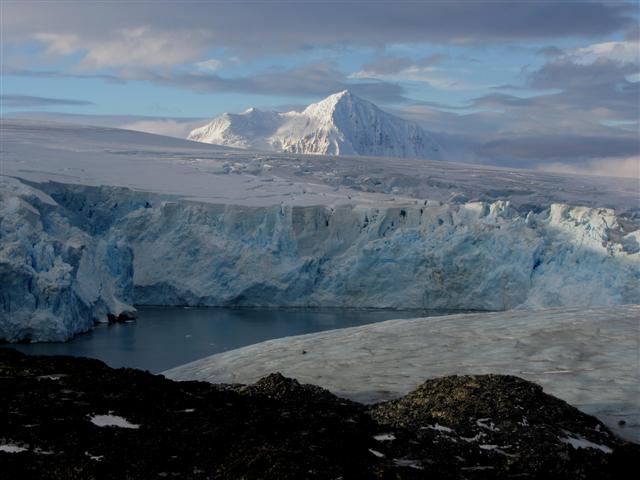Growing pressureScientists warn of uncertain future for Antarctica from climate change, human activitiesPosted August 3, 2012
Antarctica faces an uncertain future amidst growing pressures from global climate change and human activities — a major conservation challenge that will require a commitment from scientists, policymakers and others with interests in protecting the environmental and scientific values of the southernmost continent. That’s the conclusion from a group of international researchers and conservationists, including several National Science Foundation The group used a horizon-scanning approach, a strategy used to identify conservation matters that are of both regional and global significance, to examine emerging trends and potential threats to the Antarctic terrestrial and marine regions. The authors note that Antarctica faces growing threats from global warming, ice loss, increased tourism, over-fishing in the region, pollution and invasive species. A longer-term concern is the exploitation of natural resources such as oil, gas and minerals. The article was the result of a summit held last year in South Africa by Steven Chown of Monash University “We looked at emerging conservation risks, and how issues are being dealt with now,” said Alison Murray The Antarctic Treaty System “The Antarctic Treaty has worked well for the past 50 years, but we need to rethink how best to protect the continent from a range of growing threats,” Kennicutt said in a Texas A&M press release following the publication of the Science article, which coincided with an international meeting of Antarctic scientists and policymakers in Portland last month. [See related article — Changing with the times: SCAR meeting returns to U.S. for first time in 26 years.] “The treaty forbids oil or gas development, but it’s possible that could be challenged in the years to come. Until now, energy companies have shown little interest in exploring the southern reaches of our planet because of the harsh conditions; the distance to market and the lack of technologies make it a very expensive commercial proposition,” Kennicutt said. “In the 1960s, most believed that drilling on the North Slope of Alaska was not economical, and in less than 30 years, it became one of the world’s major sources of oil,” he noted. “Deep-water drilling today is practiced worldwide and subfloor completion technologies are rapidly advancing, so barriers in the past may soon be overcome increasing the threat to Antarctica in the not-so-distant future.” Said Murray, “In the end, we hope that this effort and the article enhance the conversation between scientists, decision makers and the Antarctic Treaty System.” |



For USAP Participants |
For The Public |
For Researchers and EducatorsContact UsU.S. National Science FoundationOffice of Polar Programs Geosciences Directorate 2415 Eisenhower Avenue, Suite W7100 Alexandria, VA 22314 Sign up for the NSF Office of Polar Programs newsletter and events. Feedback Form |


